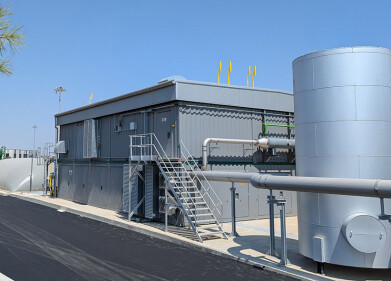Air clean up
How Has Pollution Affected the Taj Mahal?
May 19 2018
The Taj Mahal is one of the most iconic buildings in the world. Located in the northern city of Agra, it has become synonymous with the country of India and is visited by around three million tourists from all parts of the world every year. Most of all, it’s famed for its stunning white marble façade.
However, that image may be under threat. The pristine white exterior has recently become besmirched with yellow, green and brown spots most likely caused by manmade pollution. As a result, the country’s Supreme Court has ordered the government to take appropriate action.
Tarnishing the Taj
The story behind the Taj Mahal is a moving one. Legend claims that the 17th century Shah Jahan lost his wife Mumtaz Mahal to a difficult childbirth, but on her deathbed she made him promise to entomb her in the most stunning mausoleum known to man. The exquisite white marble structure is the result of his efforts.
Recently, the exterior of the building has lost some of its incredible lustre due to a build-up of pollution, dirt and grime from surrounding building sites. Its location among construction sites in Agra in the state of Uttar Pradesh means that it’s exposed to smog, dust and other unwanted contaminants. The droppings of insects compound the discolouration, leading to specks of brown, green and yellow appearing on its surface.
Taking action
India is slowly waking up to the terrible air quality crisis that has gripped the country over the last decade. With a growing market for continuous emissions monitoring systems in developing countries and a population increasingly aware of the issue, the government has pledged to tackle the crisis via a number of measures. One of them is the incredibly ambitious target of making all vehicles in the country powered by electricity by 2030.
They have now been handed another task – cleaning up the Taj Mahal. The Supreme Court met at the beginning of the month and called on the government to enlist the help of international specialists to rectify the problem. “Earlier it was turning yellow, and now it is becoming brown and green. It is very serious. It seems you are helpless. It has to be saved,” stated justices Madan Lokur and Deepak Gupta. “You can get help from experts from outside to assess the damage done and restore it... There seems to be lack of will and expertise.”
Pollution and property
The famous mausoleum isn’t the only building to feel the strain of manmade pollution. Closer to home, experts speculated that London’s property market could plummet by 10% or 15% due to excessive pollution in areas in and around the busy thoroughfare of Hyde Park. The prestigious Mayfair and Park Lane (the most expensive squares on a Monopoly board) would be directly impacted.
The solution at home must be the same as abroad - improve air quality and reduce transport-related pollution as soon as possible. The British government has introduced its own plan surrounding petrol and diesel cars, albeit a less ambitious one than the Indian target. Theresa May’s government has called for all vehicles to have zero emissions by 2050, which critics have said will be too late.
Events
May 18 2025 Algiers, Algeria
23rd International Water Management Exhibition
May 20 2025 Prague, Czech Republic
Singapore International Water Week Spotlight 2025
Jun 23 2025 Singapore
Jun 25 2025 Sao Paulo, Brasil
Jul 02 2025 Bangkok, Thailand














